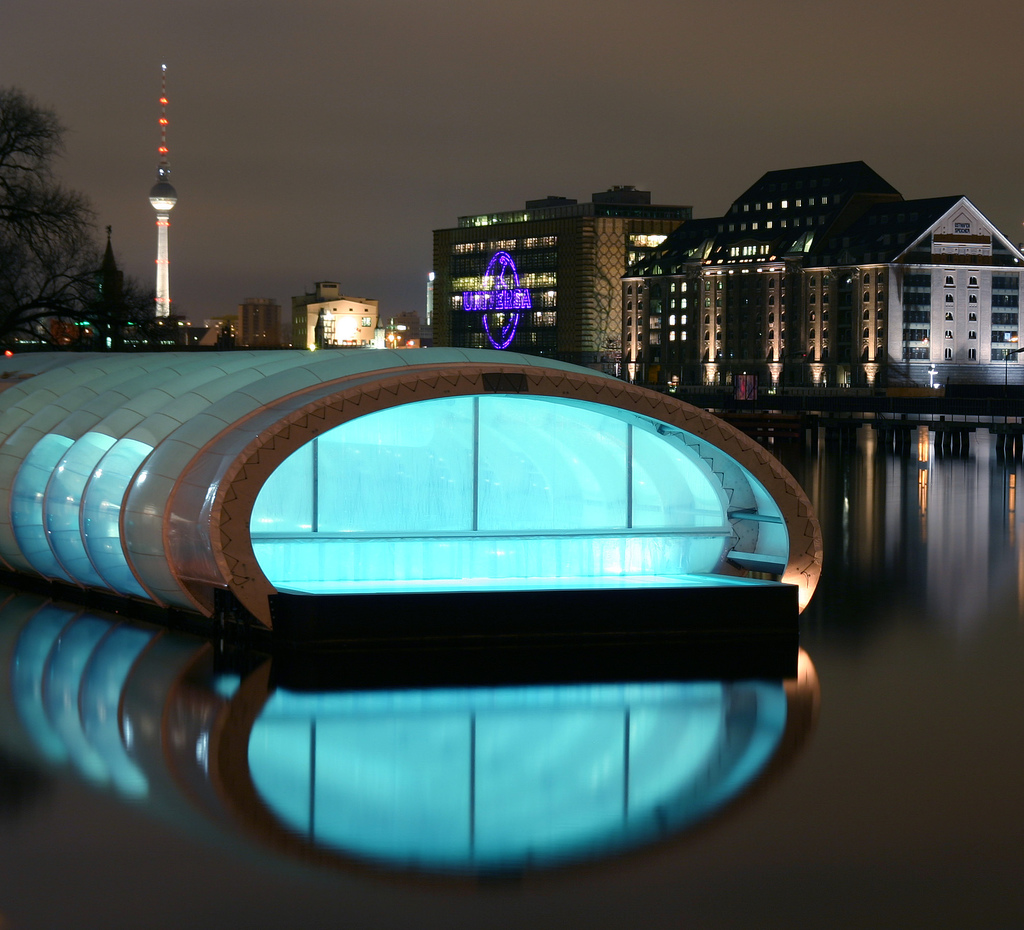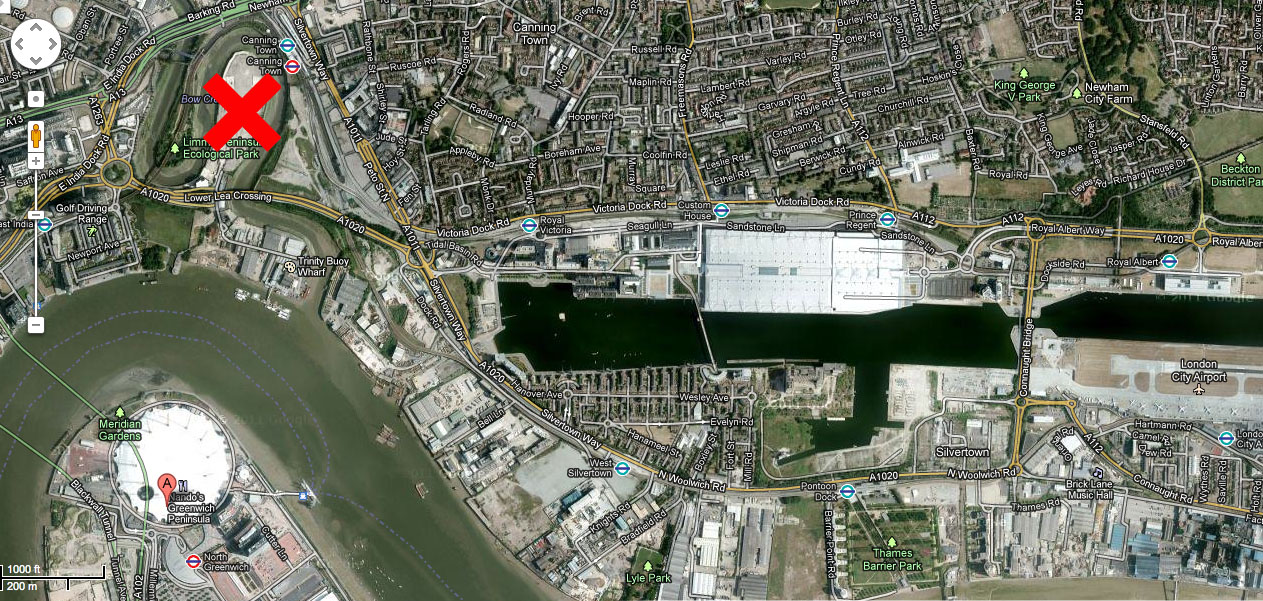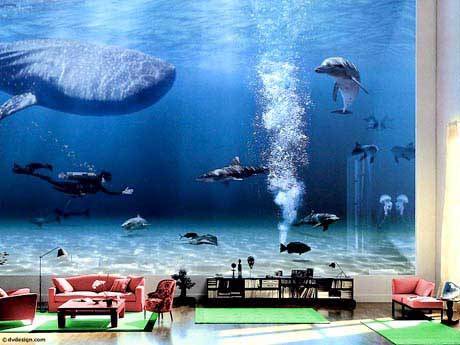145cos_LIE + DO=LIDO
The golden age of lidos in the United Kingdom was in the 1930s, when swimming became very popular, and 169 were built across the UK as recreational facilities by local councils. Many closed when foreign holidays became less expensive but the remaining lidos have a dedicated following of supporters. In 2005 a major breakthrough in lido revival took place when English Heritage published Liquid Assets – the lidos and open air pools of Britain, produced as part of the Played in Britain series. Outside Britain, and as a possible by-product of the urban beach frenzy that swept landlocked European cities over the past decade, floating pools have appeared in cities such as Istanbul’s Suada, Paris’s La Plage, Copenhagen and Berlin’s Badeschiff.
Suada!
La Plage!
Berlin’s Badeschiff (seen by day and by night) is, cunningly, a barge conversion. After all a boat already floats and this Badeschiff was necessary because Berlin’s Spree is so polluted that it is not possible to swim in it.
This raises the interesting design questions: what if the pool itself could assist in the purification of the water itself and acts as a filtration plant? The pool would then become part of the river ecology. what if the pool was combined with other ‘non-pool’ programmes such as cinema? What if the pool was sited near a flight path such, what plan form would the project take? X marks the spot! Refer Mazda Car Park proposal for Schipol Airport.
With all these ‘what ifs’ one wonders what sort of pool project we have here. According to Volume magazine, if you design an object without financing, you’re an academic; if you design the marketing without the object you’re a politician; if you design the financing without the object, you’re a capitalist.”
SAY WHAT_!?


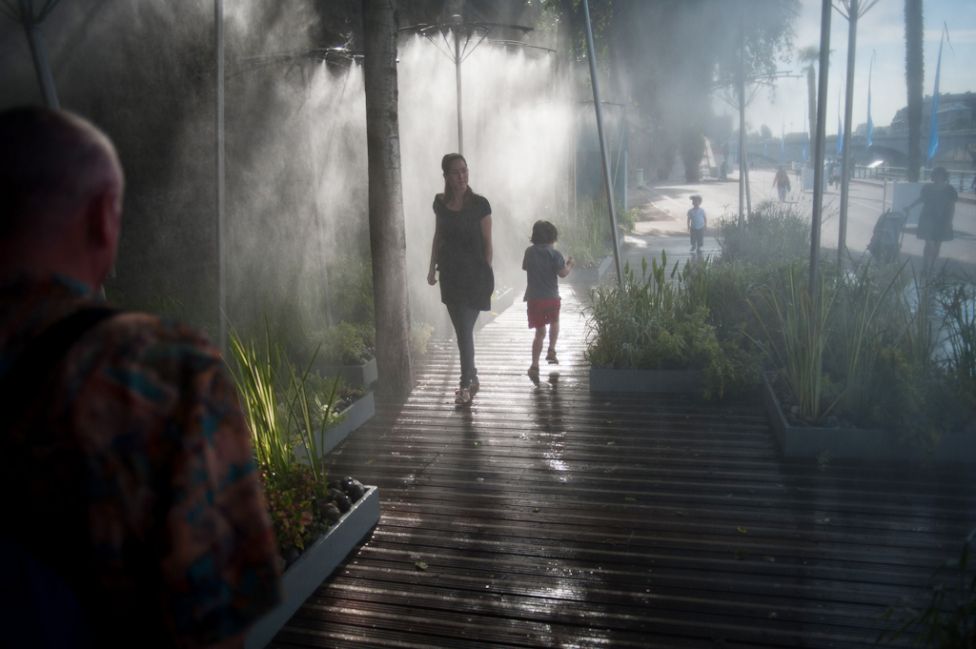
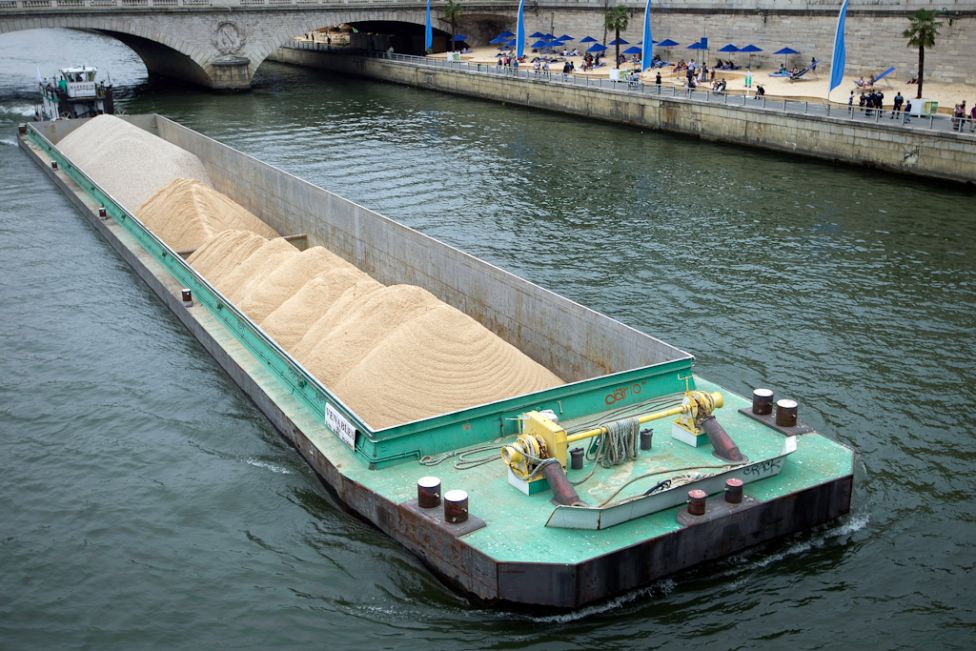
![badeschiff (3)[2]](https://www.blablablarchitecture.com/blog/wp-content/uploads/2012/01/badeschiff-32.jpg)
